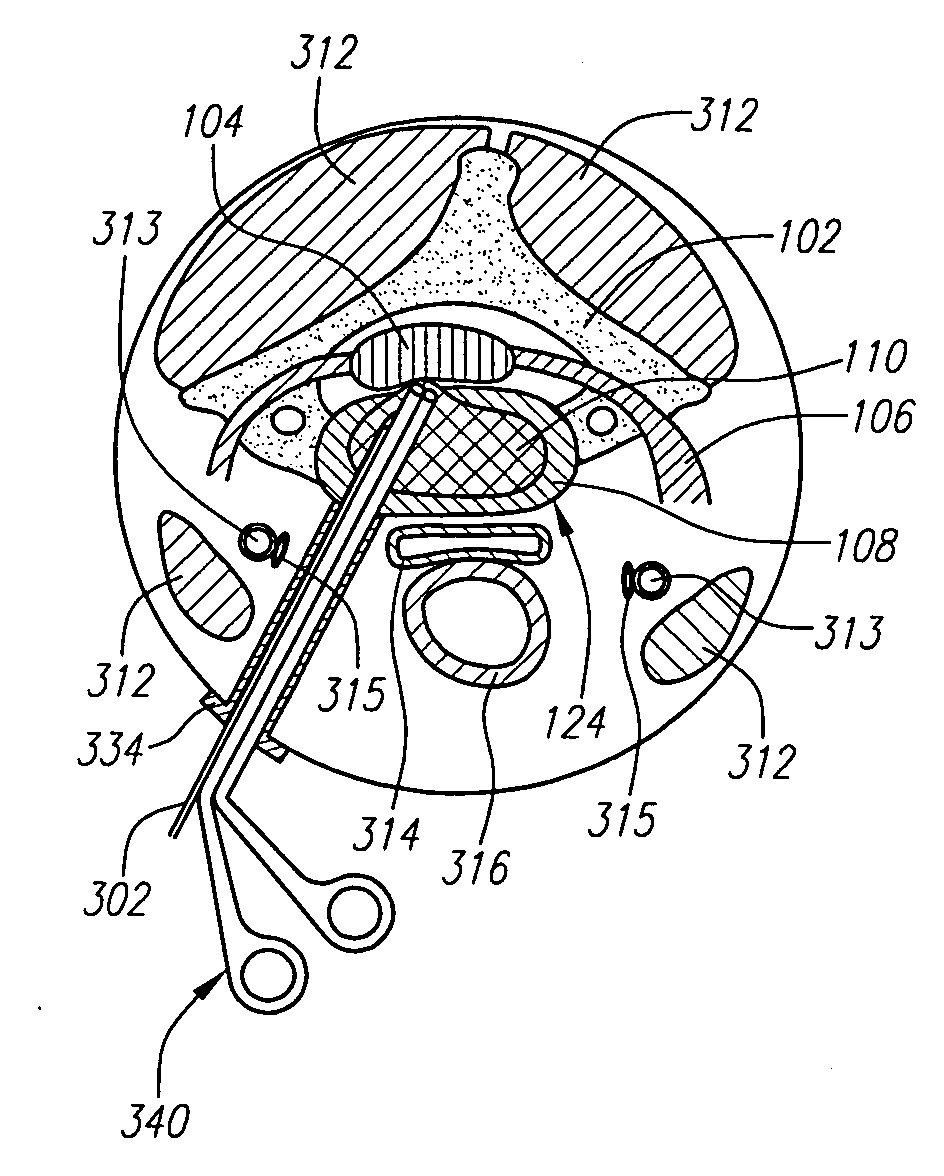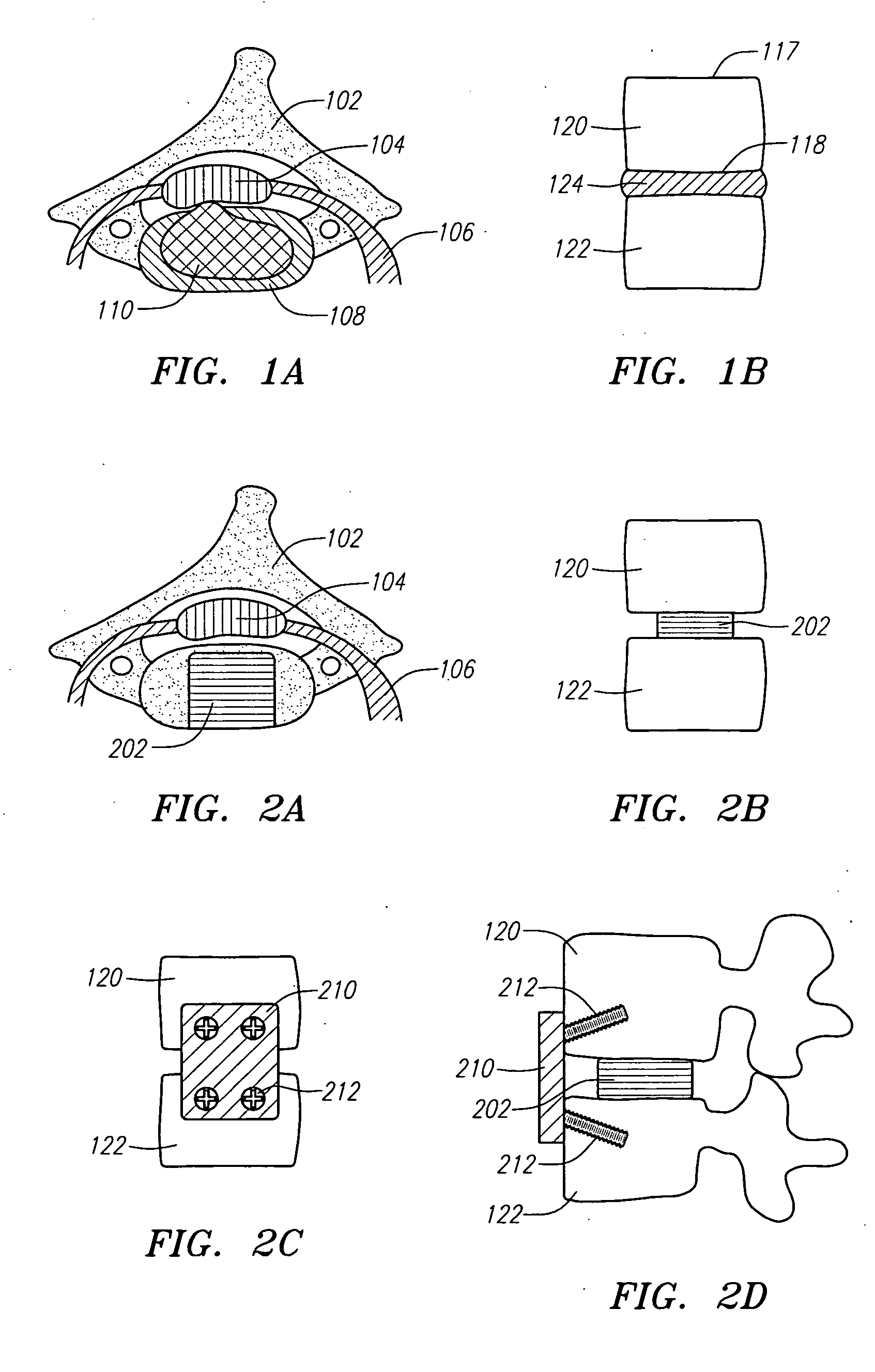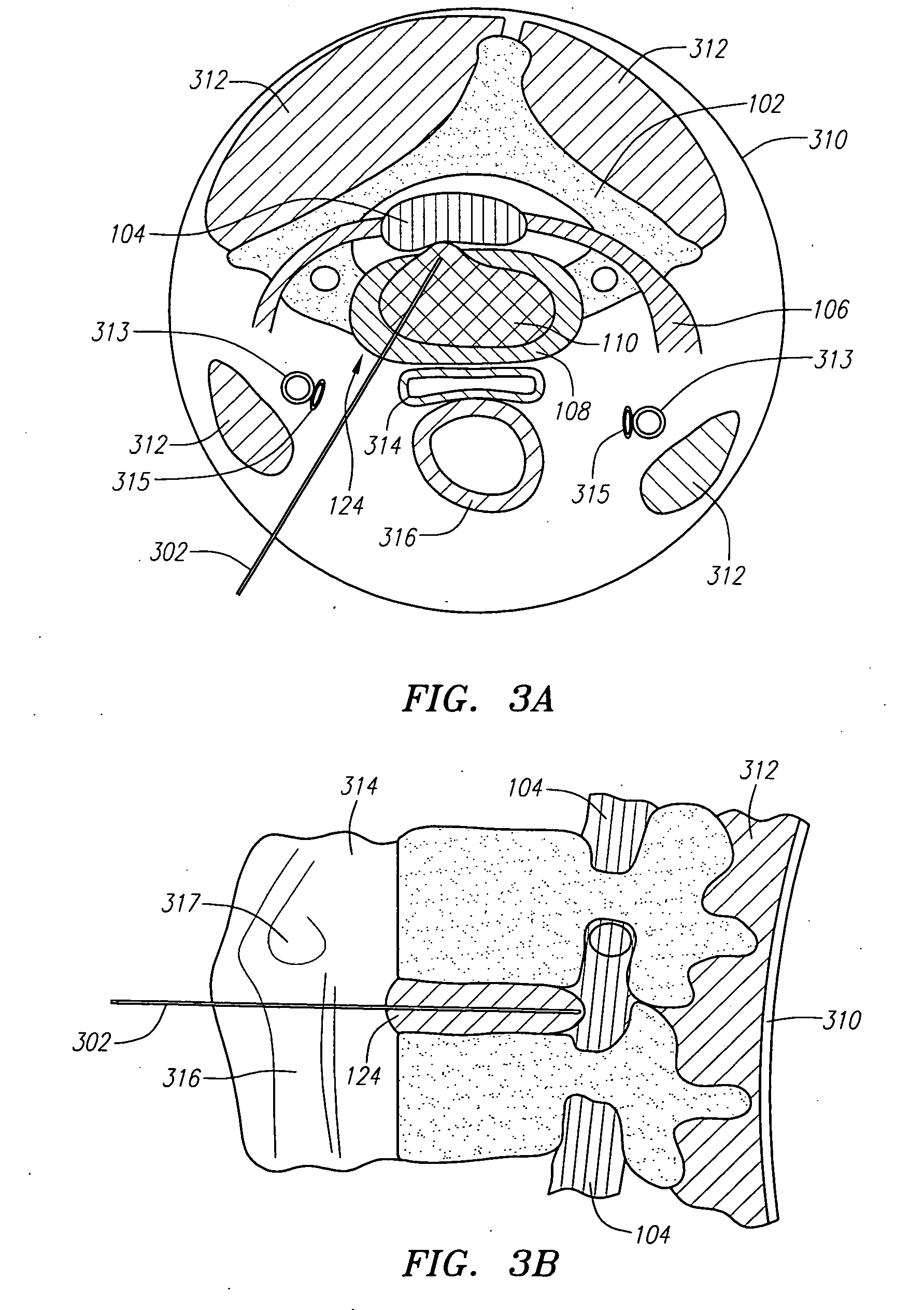Percutaneous cervical disc reconstruction
a cervical disc and reconstruction technology, applied in the direction of surgical forceps, catheters, osteosynthesis devices, etc., can solve the problems of increased disc herniation risk, decreased disc height, and loss of normal spinal structure and function
- Summary
- Abstract
- Description
- Claims
- Application Information
AI Technical Summary
Problems solved by technology
Method used
Image
Examples
Embodiment Construction
[0139]FIG. 1A is an axial cross section through a portion of the cervical spine, which shows cervical vertebra 102, spinal cord 104, nerves 106, anulus fibrosus (AF) 108, and nucleus pulpous (NP) 110. The disc is herniated. In other words, nucleus pulposus 110 extends through a defect in anulus fibrosus 108. The herniated nucleus pulpous (HNP) is shown pressing against spinal cord 104. FIG. 1B is an anterior view of a portion of the cervical spine, depicting disc 124 surrounded by cranial and caudal vertebrae 120, 122. Each vertebra has an upper vertebral endplate 117 and a lower vertebral endplate 118.
[0140]FIG. 2A is an axial cross section of a portion of the cervical spine and interbody bone graft 202. The drawing illustrates an anterior cervical discectomy and fusion. Bone graft 202 is placed into the disc space after the disc has been removed. FIG. 2B is an anterior view of a portion of the cervical spine, which illustrates cranial and caudal vertebrae 120, 122 surrounding bone...
PUM
| Property | Measurement | Unit |
|---|---|---|
| length | aaaaa | aaaaa |
| pressure | aaaaa | aaaaa |
| pressure | aaaaa | aaaaa |
Abstract
Description
Claims
Application Information
 Login to View More
Login to View More - R&D
- Intellectual Property
- Life Sciences
- Materials
- Tech Scout
- Unparalleled Data Quality
- Higher Quality Content
- 60% Fewer Hallucinations
Browse by: Latest US Patents, China's latest patents, Technical Efficacy Thesaurus, Application Domain, Technology Topic, Popular Technical Reports.
© 2025 PatSnap. All rights reserved.Legal|Privacy policy|Modern Slavery Act Transparency Statement|Sitemap|About US| Contact US: help@patsnap.com



